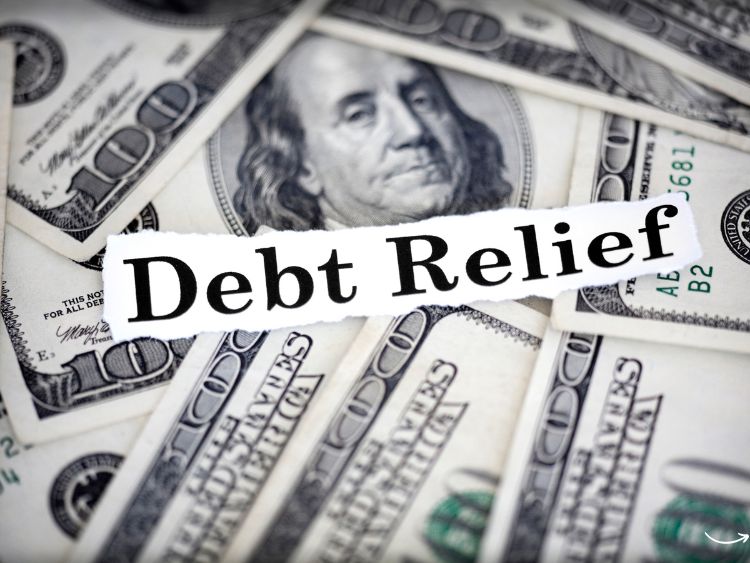Are you drowning in debt and feeling like there’s no way out? You’re not alone. Many Californians are struggling with the overwhelming burden of debt, but the good news is, there are effective solutions to help you regain control of your finances. In this guide, we’ll explore everything you need to know about California debt relief, from understanding your options to taking actionable steps toward financial freedom. So, let’s dive right in and uncover how you can start your journey to a debt-free life!
Understanding California Debt Relief
What is Debt Relief?
Debt relief is a broad term that refers to various strategies designed to help individuals reduce or eliminate their debt. These strategies can include debt settlement, debt consolidation, credit counseling, and even bankruptcy in extreme cases. The goal is to make your debt more manageable, either by reducing the amount you owe or by reorganizing your payments to better fit your financial situation.
Why is Debt Relief Important in California?
California is known for its high cost of living, and many residents find themselves burdened by debt as they try to keep up with expenses. Whether it’s credit card debt, medical bills, student loans, or mortgages, the accumulation of debt can quickly spiral out of control. Debt relief offers a lifeline to those struggling to make ends meet, providing a way to reduce debt and regain financial stability.
Types of Debt Relief Options in California
When it comes to debt relief in California, there are several options available. Each option has its pros and cons, and the best choice depends on your unique financial situation.
1. Debt Settlement
Debt settlement involves negotiating with creditors to reduce the total amount of debt you owe. Typically, a debt settlement company will work on your behalf to reach an agreement with your creditors, allowing you to pay a lump sum that is less than the full balance. This can be a viable option if you’re facing a significant amount of debt and are struggling to make minimum payments.
Pros:
- Potential to significantly reduce your total debt.
- Avoids bankruptcy.
Cons:
- Can negatively impact your credit score.
- Not all creditors may agree to settle.
2. Debt Consolidation
Debt consolidation combines multiple debts into a single loan with a lower interest rate. This simplifies your payments and can save you money on interest over time. In California, many people opt for debt consolidation through personal loans, home equity loans, or balance transfer credit cards.
Pros:
- Simplifies debt management with one monthly payment.
- Lower interest rates can save money.
Cons:
- Requires good credit to qualify for favorable rates.
- May extend the repayment period, leading to more interest over time.
3. Credit Counseling
Credit counseling involves working with a certified credit counselor who can help you develop a debt management plan (DMP). The counselor will negotiate with your creditors to lower interest rates and waive fees, making your debt more manageable.
Pros:
- Professional guidance to create a debt repayment plan.
- Can improve financial habits and budgeting skills.
Cons:
- May take several years to complete the DMP.
- Some creditors may not participate in the program.
4. Bankruptcy
Bankruptcy is a legal process that can provide a fresh start for individuals overwhelmed by debt. There are two main types of bankruptcy for individuals: Chapter 7, which involves liquidating assets to pay off debts, and Chapter 13, which reorganizes debt into a manageable repayment plan.
Pros:
- Can discharge most debts, providing a clean slate.
- Offers legal protection from creditors.
Cons:
- Severe impact on credit score and long-term financial reputation.
- Some assets may be lost in the process.
Steps to Achieve Debt Relief in California
Taking action is crucial when it comes to debt relief. Here are some practical steps you can take to start your journey toward financial freedom.
1. Assess Your Debt Situation
Begin by taking a close look at your financial situation. List all your debts, including the amounts owed, interest rates, and minimum payments. Understanding the full scope of your debt will help you determine which relief option is best for you.
2. Create a Budget
A budget is essential for managing your finances and ensuring you can make progress toward paying off your debt. Track your income and expenses to identify areas where you can cut back and allocate more money toward debt repayment.
3. Explore Your Debt Relief Options
Research the different debt relief options available in California and consider consulting with a financial advisor or credit counselor. They can help you weigh the pros and cons of each option and choose the one that aligns with your goals.
4. Contact Your Creditors
If you’re struggling to make payments, don’t wait for things to get worse. Contact your creditors to discuss your situation. They may be willing to work with you to adjust your payment plan or reduce your interest rates.
5. Consider Professional Help
If your debt is overwhelming, it may be beneficial to seek help from a debt relief company or credit counseling agency. These professionals can negotiate with your creditors on your behalf and help you develop a plan to get out of debt.
FAQs About California Debt Relief
Q1: Is debt relief a good option for everyone?
Debt relief can be a viable option for many people, but it’s not a one-size-fits-all solution. It’s important to carefully consider your financial situation and explore all available options before making a decision.
Q2: How will debt relief affect my credit score?
The impact on your credit score depends on the type of debt relief you pursue. Debt settlement and bankruptcy can significantly lower your credit score, while debt consolidation and credit counseling may have a more moderate effect.
Q3: Can I negotiate my debt on my own?
Yes, you can negotiate with creditors on your own, but it can be challenging. Debt settlement companies and credit counselors have experience and may achieve better results on your behalf.
Q4: How long does it take to see results from debt relief?
The timeline varies depending on the method you choose. Debt settlement and bankruptcy can provide relatively quick relief, while debt consolidation and credit counseling may take several years.
Q5: Are there any risks associated with debt relief?
Yes, there are risks involved with debt relief, including potential damage to your credit score and the possibility of falling into deeper debt if the plan is not followed carefully.
Summary
California debt relief offers a lifeline to those struggling with overwhelming debt. By understanding your options and taking proactive steps, you can regain control of your finances and work toward a debt-free future. Whether you choose debt settlement, consolidation, credit counseling, or even bankruptcy, the key is to make informed decisions that align with your financial goals. Remember, seeking professional advice can make a significant difference in your journey to financial freedom.
Authoritative Links
- Federal Trade Commission on Debt Relief: www.ftc.gov/debt-relief
- National Foundation for Credit Counseling: www.nfcc.org
- United States Bankruptcy Court: www.uscourts.gov/services-forms/bankruptcy
This article should provide readers with a comprehensive understanding of California debt relief and guide them on the path to financial freedom. If there’s anything more you’d like to include, feel free to ask!



